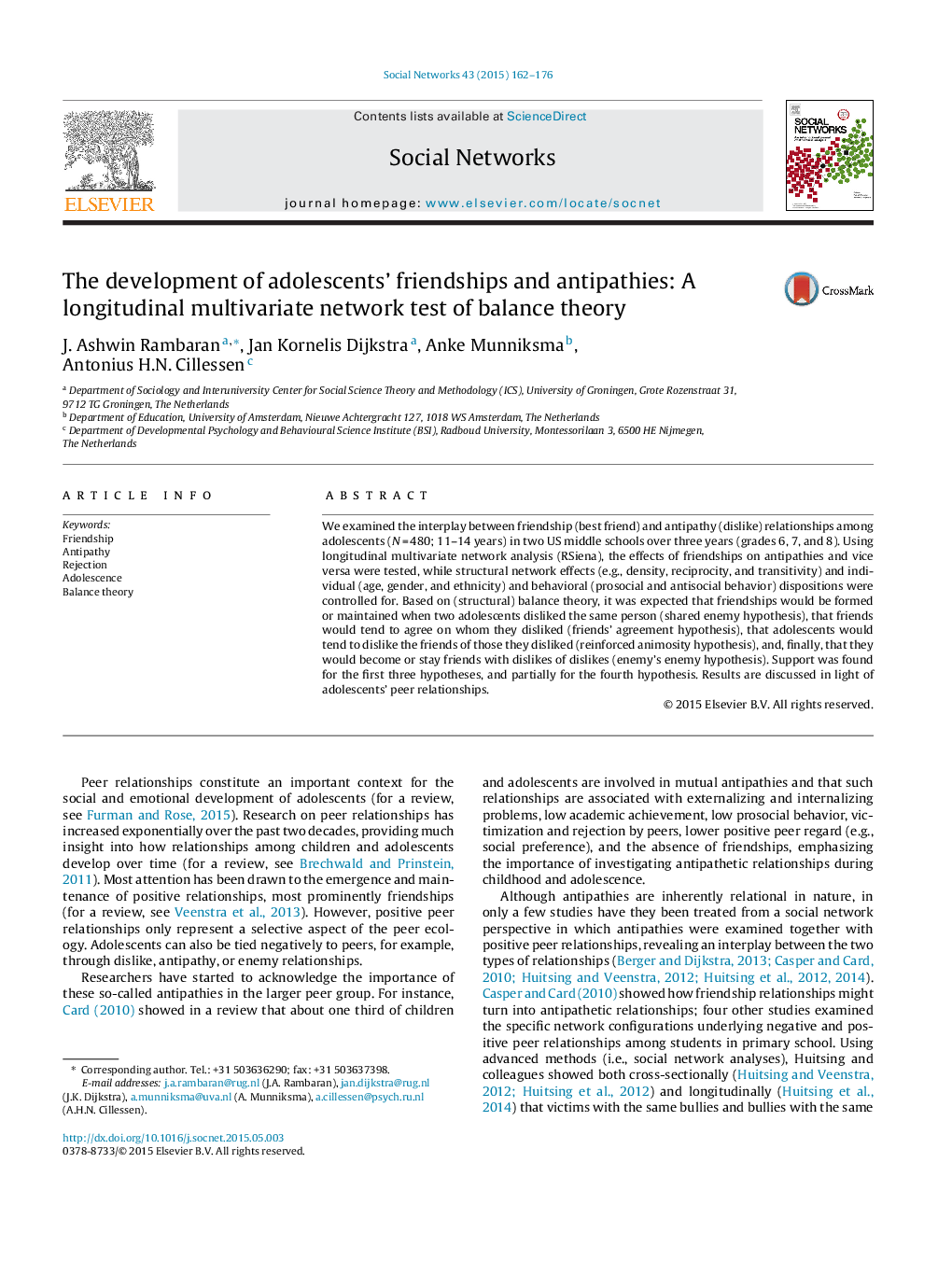| کد مقاله | کد نشریه | سال انتشار | مقاله انگلیسی | نسخه تمام متن |
|---|---|---|---|---|
| 7538610 | 1488856 | 2015 | 15 صفحه PDF | دانلود رایگان |
عنوان انگلیسی مقاله ISI
The development of adolescents' friendships and antipathies: A longitudinal multivariate network test of balance theory
ترجمه فارسی عنوان
توسعه دوستی ها و نزاع های نوجوانان: تست شبکه چند متغیره ای نظریه تعادل
دانلود مقاله + سفارش ترجمه
دانلود مقاله ISI انگلیسی
رایگان برای ایرانیان
کلمات کلیدی
دوستی، انزجار، طرد شدن، بلوغ، نظریه تعادل،
موضوعات مرتبط
مهندسی و علوم پایه
ریاضیات
آمار و احتمال
چکیده انگلیسی
We examined the interplay between friendship (best friend) and antipathy (dislike) relationships among adolescents (NÂ =Â 480; 11-14 years) in two US middle schools over three years (grades 6, 7, and 8). Using longitudinal multivariate network analysis (RSiena), the effects of friendships on antipathies and vice versa were tested, while structural network effects (e.g., density, reciprocity, and transitivity) and individual (age, gender, and ethnicity) and behavioral (prosocial and antisocial behavior) dispositions were controlled for. Based on (structural) balance theory, it was expected that friendships would be formed or maintained when two adolescents disliked the same person (shared enemy hypothesis), that friends would tend to agree on whom they disliked (friends' agreement hypothesis), that adolescents would tend to dislike the friends of those they disliked (reinforced animosity hypothesis), and, finally, that they would become or stay friends with dislikes of dislikes (enemy's enemy hypothesis). Support was found for the first three hypotheses, and partially for the fourth hypothesis. Results are discussed in light of adolescents' peer relationships.
ناشر
Database: Elsevier - ScienceDirect (ساینس دایرکت)
Journal: Social Networks - Volume 43, October 2015, Pages 162-176
Journal: Social Networks - Volume 43, October 2015, Pages 162-176
نویسندگان
J. Ashwin Rambaran, Jan Kornelis Dijkstra, Anke Munniksma, Antonius H.N. Cillessen,
